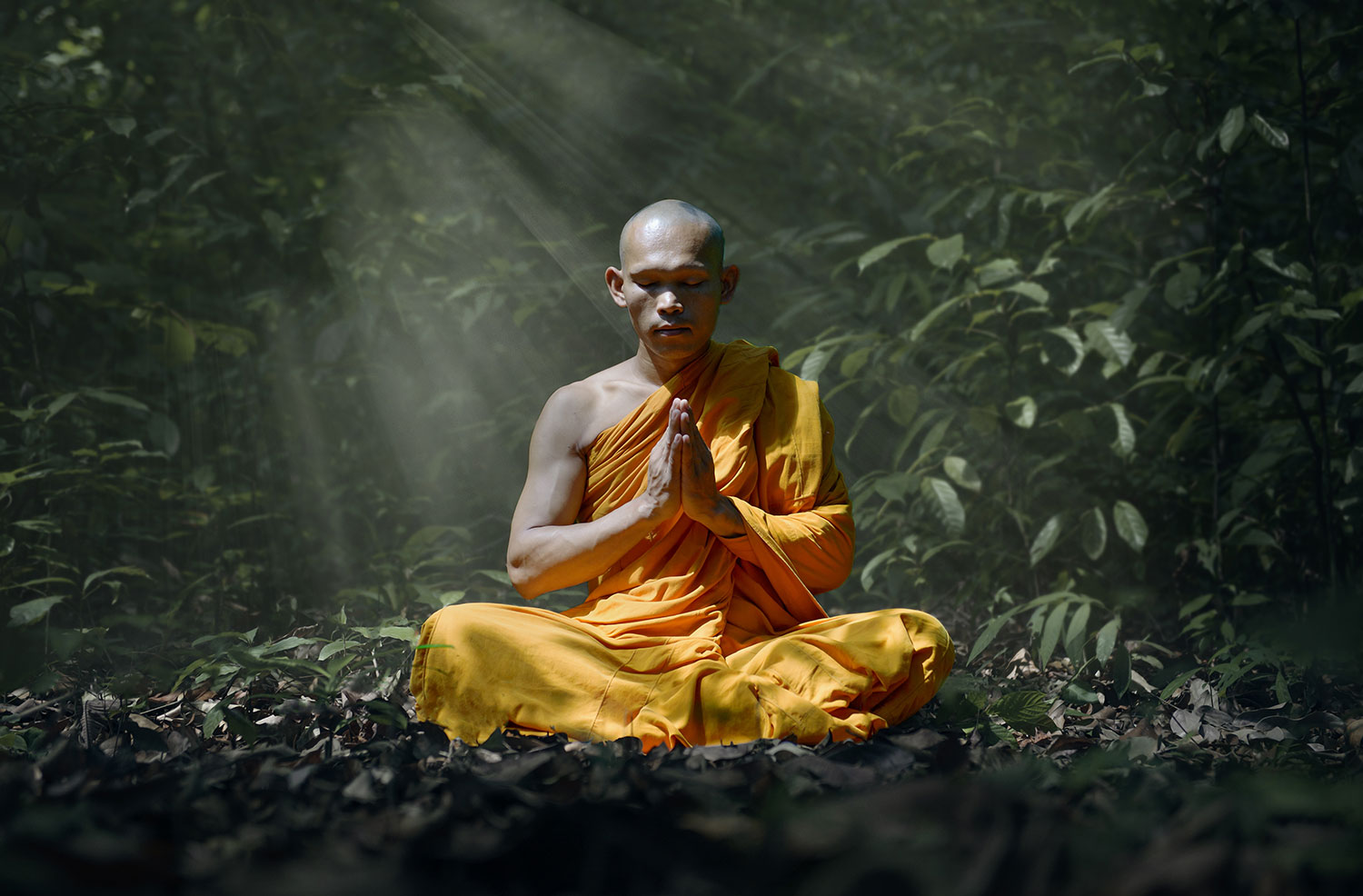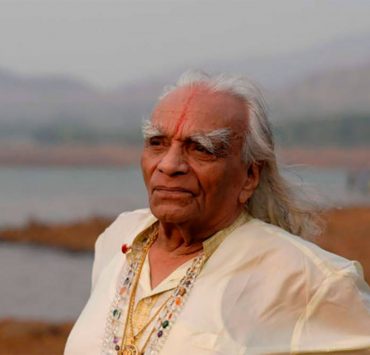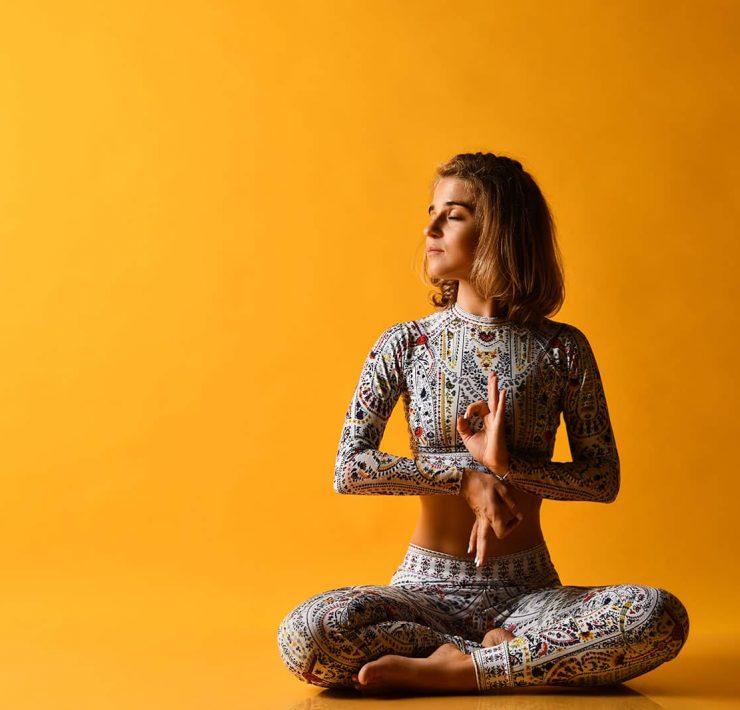
Rose graduated with a degree in Anthropology, which takes her…
In present times, when someone mentions the word ‘yoga,’ images of spandex, instagram, and sweaty gyms may come to mind. However, this is a very narrow view of yoga. Yoga has been both practiced and studied in the West since the early 1900’s. Over the past century or so, yoga in Western culture has morphed from a fascination with Hindu theology to a fascination with physical image. Of course, this is a generalization of the trends. Nevertheless, it is easily argued that over the last century, western yogis have become more and more disconnected from yoga’s original teachings. These teachings lie within thousands of years old Indian texts such as the Bhagavad Gita and Vedas. To understand yoga is to understand these texts, and the historical context in which they exist.
Modern Yoga Versus Traditional Yoga

A simple way to describe the trajectory of yoga in the west is commercialization. Unfortunately, yoga has become commercialized into a $6 billion industry to promote business in yoga studios, gyms, television channels, websites, clothing brands, social media, and more. In the hunt for greater capital gain, many yoga-related companies have lost the original teachings of yoga on lack of attachment to material goals.
All the powers in the universe are already ours. It is we who have put our hands before our eyes and cry that it is dark. Swami Vivekananda
Overall, in modern yoga there is an emphasis on the physical aspects and physical ‘results’ of yoga. This is countered with a lack of discussion of traditional yogic teachings in public yoga classes. It is rare to find a yoga class in a public gym that mentions the eight limbs of yoga, the yamas, the niyamas, breathing techniques (pranayama), or more. As such, modern yogis have lost touch with the original teachings of yoga.
Modern Yoga: Emphasis On Asana

As mentioned, modern yoga in the west is characterized by an emphasis on physical postures, or asana. A yoga class is typically composed of sequences of poses varying in difficulty, with maybe five minutes maximum of meditation or savasana at the class’ closing. Practicing yoga in this way, the depth and breadth of its philosophy and history is lost. This is not to say that the physical postures are not important. Instead, the poses are integral to yoga. Yoga brings about physiological changes that complement the inner, spiritual development. However, if the philosophy of yoga is not taught alongside the physical postures, the yoga students will most certainly lose out on the true holistic benefits of their yoga practice, and how to channel their new physical energy.
Traditional Yoga: Emphasis On Union

Traditional yoga differs from modern yoga due to its emphasis on union. In Sanskrit, the word ‘yoga’ actually means union. This refers to the union of the breath and the body, the union of all beings, and most importantly the union of the self with the Divine. It is taught that there are eight limbs of yoga. Each limb is comparable to a different ‘department’ of yoga. Some limbs, such as the yamas and niyamas, teach moral discipline and ways to live your life. Other limbs such as pranayama focus on breathing techniques, or dharana which is all about mental concentration. In comparison, the physical postures of yoga only make up a fraction of the entire practice: the asana limb.
Who Brought Yoga To The West?
So how did we arrive here, in 2018, where yoga in the west is so drastically different from its origins? To understand the progression of yoga in the west, as well as the lost teachings of yoga, it is important to understand how yoga first came to the west. Yoga originated in India, and its migration to the west can largely be traced back to Indian scholars and swamis who travel to western countries in the 1800’s and 1900’s. Some of these central figures are discussed below.
Shivapuri Baba

Shivapuri Baba was born in Kerala, India in 1826, and was said to live until 1963 when he would have been 137 years old. He was known as a ‘wandering monk’ and shunned all material gain, instead traveling throughout India and the rest of the world, sharing his vision of the Divine. Shivapuri Baba had a special relationship with Queen Victoria of England, and had a role in introducing the yogic teachings to her over his 18 private visits. His teachings focused on practicing discipline through physical, moral, and spiritual means. He also traveled to the United States at the behest of President Theodore Roosevelt in the early 1900s. It is commonly said that Shivapuri Baba was one of the first to bring yoga to the west.
Swami Vivekananda

One of the most well-known yogis in present times is Swami Vivekananda, who came to the United States in 1893 for the Chicago Parliament of Religions. Like Shivapuri Baba, he is believed to be one of the first to bring yogic teachings to the West. However, the yoga that Vivekananda spoke of during his captivating speeches at the Parliament of Religions is very different from the yoga that is practiced in modern times. Vivekananda’s teachings relied less on the physical practice of yoga, and instead he taught his students to disconnect from the ego, by saying,
‘Do not cling to the idea of “body”, do not look for a future existence in any way like this one; do not love or want the body, even of those dear to us.’
Paramahansa Yogananda

Another yogi credited with bringing traditional yoga to the west is Paramahansa Yogananda. He came to the United States a few decades after Vivekananda and Shivapuri Baba, in 1920. Yogananda’s teachings focused largely on kriya (cleansing) yoga, and of course union. Perhaps his most lasting influence of yoga in the west was due to his book, Autobiography of a Yogi. This book was originally published in 1946 and became a phenomenon that spurred interest by the general public in the practice of yoga.
B.K.S. Iyengar

Yoga’s arrival in the west cannot be discussed without mentioning the beloved B. K. S. Iyengar, who passed away in 2014. Iyengar meticulously wrote and photographed the book Light on Yoga, which was published in 1966 as an encyclopedia of all the yoga poses, their benefits, how to practice them, pranayama techniques, and more. This book has been a guiding light to yogis everywhere, and remains a central text in many teacher training programs. Other than his book, however, Iyengar founded his own unique kind of yoga (named after himself), which has a focus on anatomy and alignment. Most modern yoga classes, whether they are in the Iyengar style or not, carry some influence from Iyengar’s teachings. As Iyengar understood yoga, he proclaimed, ‘[yoga] is the integration of body with the mind, mind to the consciousness and consciousness with the intelligence itself.’
What Are The Lost Teachings?

What Are The Lost TeachingsSimilar to a game of telephone, which children play by whispering phrases into each other’s ears and hearing how the message changes over time, it is understandable that the practice of yoga altered through its transition to the west. From its origin in India five thousand years ago, to the sages such as Vivekananda, Yogananda, and others who shared yogic teachings with the West in the early and mid 1900s, yoga evolved. In spreading the message of yoga, obviously one complication was the issue of translating the ancient teachings to Sanskrit to English. Whilst some things were lost in language translation, others were likely lost in cultural translation. For instance, eastern cultures and the yogic teachings focus on interdependence, with an emphasis on union between all beings. In contrast, western cultures are much more individualistic. In order to capture their western audiences, the traveling yogis had to greatly condense the messages of ancient texts such as the Vedas and Sutras. As time passed, even these condensed translations changed as they were influenced by a capitalist and commercialization-focused society.
Vedas
The first of the ancient teachings of yoga that deserves to be discussed is The Vedas. The Vedas are thought to have been collected in 1500 BCE, originally as oral stories and eventually in writing. The Vedas are recorded in Sanskrit, and thought to be written by the nomadic Aryans who lived in India. The texts are composed of epic poems, lessons, hymns, and more. The Vedas tell the story of many gods and wars. How do The Vedas relate to yoga, though? Within The Vedas, the building blocks of both Hinduism and yoga are developed. Moral and spiritual values are discussed, primarily, the idea of yoga as union with the Divine.
Brahmana
Another ancient text is the Brahmanas, which are secondary to The Vedas. The Brahmanas are, in relation to The Vedas, more recent, in that they date back to 900-700 BCE. As they were originally recorded, the Brahmanas are a critique and discussion of The Vedas. The word ‘Brahman’ means ‘priest,’ and refers to the priests who wrote the Brahmanas in an attempt to decode The Vedas. The Brahmanas analyzes The Vedas, trying to demystify the threads of meaning within yoga’s first text.
Aranyaka
The Aranyaka are another group of ancient texts, written as an extension to the Brahmanas in the centuries long attempt to demystify The Vedas. They date to 700 BCE. They primarily focus on understanding ritual sacrifices from an outside perspective, and applying philosophy to the many allegories of The Vedas. The Aranyakas were not meant for the general public. Instead, they were written for hermits, wandering monks, or rishis, who lived outside of general society. In relation to modern day yoga, the Aranyakas are significant as they discuss the cycle of karma, and the meaning and power of om, the syllable which is traditionally chanted during yoga class.
Upanishads
Leading on from the Aranyakas are the Upanishads. The Upanishads are regarded as a development on the beginning philosophical discussion begun in the Aranyakas. Although it is difficult to date the Upanishads, it is believed that they were written around 800-500 BCE. This time period is significant because society was transitioning away from ritual sacrifice, and becoming more critical of the original Vedas. In the Upanishads, philosophical discussion transitioned away from literal sacrifice, and more toward spiritual development. There are 108 Upanishads (a sacred number), which cover topics ranging from the Divine, Karma, afterlife, the beginning of the universe, and more.
Yoga Sutras
Although still considered ‘ancient,’ the Yoga Sutras of Patanjali are the most recent of all the texts discussed herein. Thought to have been compiled in 400 CE, the Yoga Sutras are a collection of terse moral guidelines for a yogic life. The word ‘sutra’ means ‘thread,’ and refers to the threading together of yoga philosophy through these short sayings. The Yoga Sutras is made up of four distinct chapters, and 196 individual sutras. Within these sutras, Patanjali brings the reader through the eight limbs of yoga. This includes moral discipline such as in the yamas and niyamas, to more ethereal concepts such as the eighth limb Samadhi, or union with the divine. Although not much is known about Patanjali himself, his sutras are considered one of the most important yogic texts of all time. Reading the Yoga Sutras is a profound experience when read in the context of modern, westernized yoga.
Yoga is the cessation of the movements of the mind. Then there is abiding in the Seer’s own form. Patanjali
This and the other lessons found within the Yoga Sutras of Patanjali could provide a profound shift in modern yoga practice.
Conclusion

This has just been a small glimpse into the depth of ancient yogic teachings. Sadly, many of these teachings have been lost or convoluted over time. This is due to natural cultural differences, language translation, economic and societal pressures, and more. It may seem that modern yoga has strayed too far from its philosophical roots. Looking at the media’s image of yoga – thin women in spandex practicing bendy poses – some may wonder whether a return to these lost teachings is even possible. The ancient teachings never mentioned flexibility, and many of them never even discussed asanas at all.
So the question bears… is a return to the ancient teachings possible? And if so, is that even wise? A wealth of knowledge can be gained from examining these ancient texts, considering them in relation to modern life, and respecting the history they carry. It may not be wise to advocate for a complete return to the ancient texts’ teachings, though (after all, The Vedas focus on ritual sacrifice!). Instead, modern yogis should use the ancient texts to advance their knowledge of philosophy, and to practice with greater integrity.
What's Your Reaction?
Rose graduated with a degree in Anthropology, which takes her understanding of basic human needs to a whole new level. Her intelligence and passion for healthy living is reflected in her written work.














